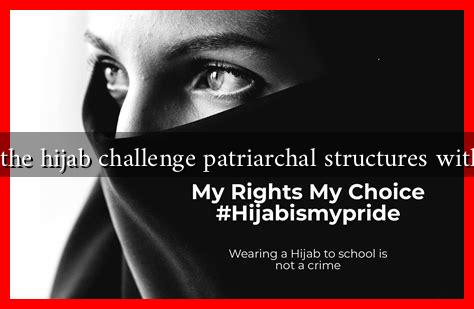-
Table of Contents
How Can the Hijab Challenge Patriarchal Structures Within Islam?
The hijab, a traditional headscarf worn by many Muslim women, is often viewed through a lens of oppression and control. However, it can also serve as a powerful symbol of resistance against patriarchal structures within Islam. This article explores how the hijab can challenge these structures, empowering women and redefining their roles within both religious and societal contexts.
The Hijab as a Symbol of Empowerment
For many women, wearing the hijab is a personal choice that signifies their faith and identity. Contrary to the perception that it is merely a tool of oppression, the hijab can empower women in several ways:
- Personal Agency: Choosing to wear the hijab allows women to assert their autonomy over their bodies and choices.
- Religious Identity: The hijab can serve as a means of expressing one’s faith, fostering a sense of belonging within the Muslim community.
- Resistance to Objectification: By covering their hair and bodies, women can challenge societal norms that objectify them based on appearance.
Historical Context of the Hijab
The hijab has a long and complex history within Islamic tradition. It is often associated with modesty and piety, but its interpretation has varied across cultures and eras. Historically, the hijab has been used as a tool for both oppression and empowerment:
- Pre-Islamic Arabia: Women had various forms of dress, and the introduction of the hijab was part of a broader movement towards modesty.
- Colonialism: During colonial times, Western powers often targeted the hijab as a symbol of backwardness, leading to a backlash among Muslim women who sought to reclaim their identity.
- Modern Movements: In contemporary times, many Muslim women have embraced the hijab as a form of resistance against Western imperialism and cultural hegemony.
Case Studies: Women Challenging Patriarchy Through the Hijab
Numerous examples illustrate how women have used the hijab to challenge patriarchal norms:
- Malala Yousafzai: The Nobel laureate and education activist wears the hijab as a symbol of her faith and commitment to women’s rights, challenging both gender and cultural norms.
- Linda Sarsour: A prominent activist in the U.S., Sarsour uses her hijab to advocate for social justice, highlighting the intersectionality of race, gender, and religion.
- Muslim Women’s Organizations: Groups like the Muslim Women’s Network UK work to empower women through education and advocacy, often using the hijab as a symbol of their mission.
Statistics and Research on the Hijab
Research indicates that the hijab can have a positive impact on women’s self-esteem and identity. A study conducted by the University of Michigan found that:
- Over 70% of Muslim women who wear the hijab reported feeling empowered by their choice.
- Women who wear the hijab often feel a stronger connection to their faith and community.
These findings challenge the narrative that the hijab is solely a symbol of oppression, highlighting its role in fostering empowerment and identity among Muslim women.
Conclusion: Redefining the Narrative
The hijab is a multifaceted symbol that can challenge patriarchal structures within Islam. By embracing the hijab, women assert their agency, redefine their roles, and resist societal norms that seek to objectify them. As more women share their stories and experiences, the narrative surrounding the hijab continues to evolve, showcasing its potential as a tool for empowerment rather than oppression.
In conclusion, understanding the hijab’s role in challenging patriarchal structures requires a nuanced perspective that recognizes the agency of women who choose to wear it. As society continues to grapple with issues of gender, identity, and faith, the hijab stands as a powerful testament to the resilience and strength of Muslim women worldwide.
For further reading on this topic, you can explore resources from organizations like Muslim Women’s Network UK and academic studies on the subject.

